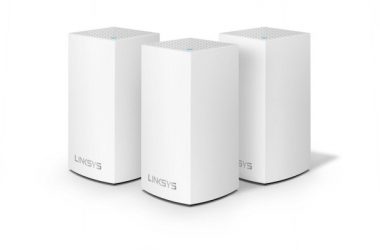
Multiprotocol Label Switching has been without a doubt one of the most successful technologies of the past decade.
The advantages of MPLS are many: in addition to protocol neutrality, MPLS is highly scalable and can intelligently route time-sensitive voice and video packets through low-latency routes throughout the network. Because of these key features MPLS has been widely adopted by enterprises for their WANs, as the most recent data from Nemertes Research indicates that around 84% of companies are now using MPLS for their WANs.
But this success doesn’t mean that MPLS is finished evolving as a technology, as the Internet Engineering Task Force (IETF) has been working on a number of different improvements to MPLS that will allow it to be applied to transport architecture, mobile backhaul and IPv6.
Perhaps the most important MPLS evolution will be MPLS Transport Profile (MPLS-TP), an MPLS expansion that is tailored for optical and transport networks. Andrew Malis, a member of the IETF’s Internet Architecture Board and a principal member of Verizon Communications’ technical staff, says that MPLS-TP is basically the same as MPLS but with key new features.
"MPLS-TP can take advantage of features such as Quality of Service and fast reroute and put that into optical and transport networks that have typically been based on TDM only," he says. "It brings the benefit of packet switching to optical and transport networks."
According to a paper as the ability to engineer traffic at a monitored end-to-end performance. Additionally, MPLS-TP can run over any physical layer, from Ethernet to SONET/SDH to OTN.
Mike Capuano, the director of service provider marketing at Cisco, says that some transport service operators have been reluctant to use MPLS over their networks because standard MPLS doesn’t give them the level of control they feel they need. With MPLS TP, Capuano says transport operators will have the Operations, Administration and Maintenance (OAM) capabilities necessary for properly managing their network.
"Packet technologies have historically not had the same level of instrumentation that transport technologies like SONET/SDH," he says. "So there’s been a lot of attention paid to giving Ethernet and MPLS those same features. In certain circumstances transport operators are more comfortable provisioning point-to-point links rather than using MPLS. With MPLS-TP they’ll be able to manually provision MPLS tunnels."
MPLS over IPv6, LTE coming further down the line
While MPLS-TP will be the most immediate version of the technology to hit the market, engineers have also been hammering out ways to integrate MPLS with IPv6 networks and with 4G wireless Long Term Evolution networks. On the IPv6 side of things, Malis says that the major technological work is finished and that providers "can use MPLS to carry both IPv4 and IPv6 traffic." But even though MPLS is now compatible with IPv6, it’s unlikely that it will become widely used in the near future since IPv6 traffic still only accounts for less than 1% of all Web traffic.
"IPv6 migration is obviously a big issue, but we don’t think it impacts MPLS as much," Capuano says. "It’s more about service providers moving quickly to get to IPv6 before we run out of IPv4 addresses."
Of more immediate interest is the potential to integrate MPLS with LTE technology and use it for mobile backhaul. InfoNetics analyst Michael Howard says that because LTE is an IP-based mobile data technology that it’s a perfect fit for MPLS. Malis echoes Howard’s sentiments and thinks that MPLS is an ideal technology to use for 4G mobile backhaul.
"3G networks are mostly based on ATM and 4G networks are based on Ethernet and IP," he says. "LTE is focusing on IP over Ethernet as its standard backhaul technology and MPLS works quite well there."
Malis says that designing an MPLS mobile backhaul system is particularly tricky because engineers have to have both clocking requirements and handoffs between stations. These features are key for a technology such as LTE, which Malis notes will eventually be relied upon not just for data but for voice and video streaming as well. But once MPLS can be successfully implemented on and LTE network, Malis thinks that it will be a major asset to LTE service quality, particularly when it comes to giving priority to voice and video packets.
"One of the real strengths of MPLS is its ability to do traffic engineering," he says. "It’s going to be quite a while where carriers are in the process of transitioning to LTE, and the nice thing about MPLS is that it will give them one common infrastructure that they’ll get to use over and over."
MPLS widely adopted for WANs; MPLS-TP, integration with LTE and IPv6 loom





